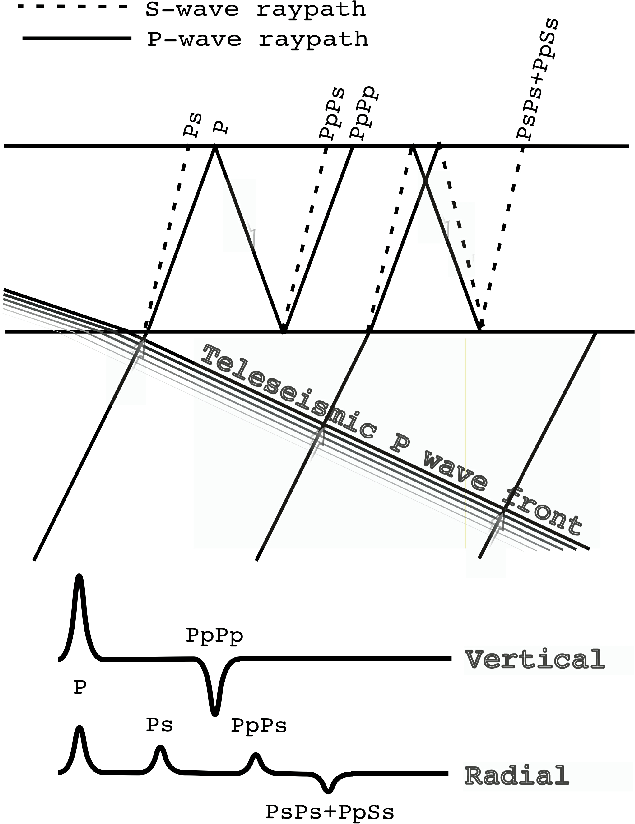




Next: Source-Receiver Geometry of Teleseismic
Up: Wilson et al.: Teleseismic
Previous: Wilson et al.: Teleseismic
Deployments of regionally extensive seismic arrays in the last decade have provided earthquake data that afford images of the lithosphere at scales hitherto
unattainable
Dueker and Sheehan (1998); Poppeliers and Pavlis (2003); Rondenay et al. (2001); Wilson et al. (2003).
Attesting to their importance, these images now play a crucial role in improving our
understanding of past and present processes of tectonic evolution. The next decade, owing to the
EARTHSCOPE![[*]](http://sepwww.stanford.edu/latex2html/foot_motif.gif) program and the associated US-ARRAY, will see a
dramatic increase in the volume of three-component broad-band
seismic data available for imaging the North American
lithosphere. However, to fully exploit this opportunity current lithospheric imaging practice must be improved.
program and the associated US-ARRAY, will see a
dramatic increase in the volume of three-component broad-band
seismic data available for imaging the North American
lithosphere. However, to fully exploit this opportunity current lithospheric imaging practice must be improved.
Most teleseismic imaging experiments use forward-scattered P-to-S converted waves isolated using receiver function analysis Langston (1977); Phinney (1964). The reasons for concentrating only on this phase are mainly historical. Before the use of receiver arrays became commonplace in
teleseismic imaging, only data from
sparsely distributed three-component stations were available. Seismologists interested in structure beneath a seismic station
were forced
to use scattered phases that could be identified and isolated from
a single set of three-component seismograms. One easily identified phase is horizontally polarized shear waves converted
from lithospheric discontinuities by nearly vertically incident teleseismic P
waves; However, identifying backscattered phases (e.g. free surface multiples) requires the use of moveout variations instead of polarization. For a single station, there is no moveout of scattered phases without several teleseismic sources from a variety of distances thereby making use of other scattered phases nearly impossible.
Contemporaaneously, the introduction of spatially extensive three-component seismic arrays, earthquake seismologists began adapting imaging practices of exploration seismology to produce images of the crust and mantle with teleseismic waves. Initial work in teleseismic imaging used simple processing flows involving linear moveout corrections combined with common conversion point stacking Dueker and Sheehan (1998). Later efforts attempted to adopt Kirchoff imaging schemes to produce images of the Cascadia subduction zone Rondenay et al. (2001) and an Archean continental suture in Southwestern Wyoming Sheehan et al. (2000). Rondenay et al. (2001) and more recent work by Aprea et al. (2002) clearly demonstrated the utility of backscattered phases in lithospheric imaging and fomenting a new direction for future teleseismic imaging research.
RFcart
Figure 1 Ray paths of forward
and backscattered
phases generated by an impinging teleseismic P wave front. Solid
lines mark P ray paths with S rays marked by dashed
lines. Uppercase letters denote downgoing phases with lowercase
letters symbolizing upgoing phases. The idealized vertical and
radial seismograms indicate the approximate arrival and amplitude
relationships for some of the arrivals in the ray
diagram above. The diagram demonstrates the natural separation of P
and S phases from near vertically incident waves onto the vertical
and horizontal components.
|
|  |

There are clear advantages of wave equation imaging over Kirchoff in exploration seismology. Most likely these advantages remain valid even in the modified geometry of teleseismic sources and receivers Shragge and Artman (2003) where lateral velocity heterogeneity is often encountered (e.g. in the presence of partial melt or along large offset strike-slip faults). The shot-profile formulation of wave-equation migration provides a framework in which to cast the teleseismic imaging experiment that allows the incorporation of other scattering modes besides forward-scattered P-to-S. In this paper, we demonstrate its utility for
several scattered modes produced by a teleseismic P wavefield
impinging on two simple (yet realistic) synthetic crustal
models. We also show images from migrated forward-scattered P-to-S
converted phases from a dense profile across the Cheyenne suture
near Laramie, Wyoming and compare them to images obtained using
conventional receiver function stacking techniques Dueker and Yuan (2004).





Next: Source-Receiver Geometry of Teleseismic
Up: Wilson et al.: Teleseismic
Previous: Wilson et al.: Teleseismic
Stanford Exploration Project
5/23/2004
![[*]](http://sepwww.stanford.edu/latex2html/foot_motif.gif) program and the associated US-ARRAY, will see a
dramatic increase in the volume of three-component broad-band
seismic data available for imaging the North American
lithosphere. However, to fully exploit this opportunity current lithospheric imaging practice must be improved.
program and the associated US-ARRAY, will see a
dramatic increase in the volume of three-component broad-band
seismic data available for imaging the North American
lithosphere. However, to fully exploit this opportunity current lithospheric imaging practice must be improved.
